
Spaghetti is a long, thin, solid, cylindrical noodle pasta.
It is a staple food of traditional Italian cuisine.
Like other pasta, spaghetti is made of milled wheat and water and sometimes enriched with vitamins and minerals.
Italian spaghetti is typically made from durum wheat semolina.
Originally, spaghetti was notably long, but shorter lengths gained in popularity during the latter half of the 20th century and now it is most commonly available in 25–30 cm (10–12 in) lengths. A variety of pasta dishes are based on it and it is frequently served with tomato sauce or meat or vegetables.
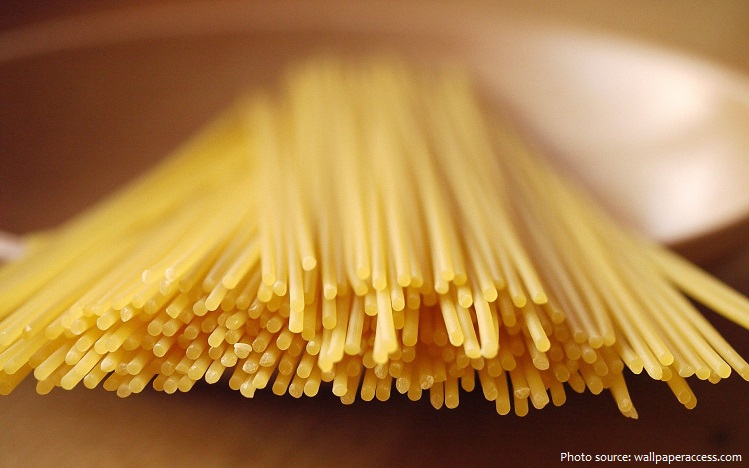
An emblem of Italian cuisine, spaghetti is frequently served with tomato sauce, which may contain various herbs (especially oregano and basil), olive oil, meat, or vegetables. Other spaghetti preparations include amatriciana or carbonara. Grated hard cheeses, such as Pecorino Romano, Parmesan and Grana Padano, are often sprinkled on top.
The word “spaghetti” was first used in 1849 as sparghetti in Eliza Acton’s Modern Cookery. It comes from Italian spaghetto, which means “thin string” or “twine”.
While some historians believe pasta originated in Italy, most are convinced Marco Polo actually brought it back from his epic voyage to China. The earliest known pasta was made from rice flour and was common in the east.

Marco Polo, who introduced the pasta in Italy upon returning from one of his trips to China in 1271. On chapter CLXXI from the “Books of the World’s Wonders”, Marco Polo makes a reference to the pasta
in China.
Polo ventured to China in the time of the Yuan Dynasty (1271-1368) and the Chinese had been consuming noodles as early as 3000 BC in the Qinghai province.
Spaghetti may have first been worked into long, thin forms in Sicily around the 12th century, as the Tabula Rogeriana of Muhammad al-Idrisi attested, reporting some traditions about the Sicilian kingdom.

The popularity of spaghetti spread throughout Italy after the establishment of spaghetti factories in the 19th century, enabling the mass production of spaghetti for the Italian market.
Although we think of spaghetti with tomato sauce as the quintessential Italian dish, tomatoes didn’t become part of the Italian diet until the 19th century.
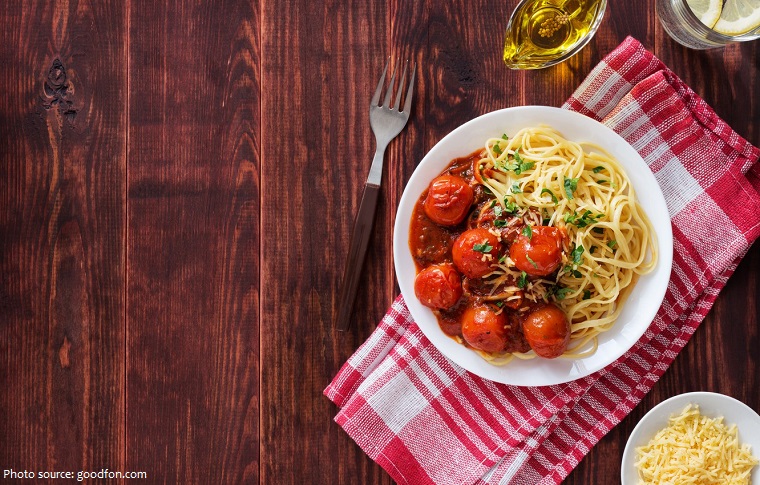
Spaghetti alla puttanesca probably has the most colorful history of any spaghetti dishes. A spicy spaghetti dish of tomatoes, capers, anchovies and garlic, the name literally translates to “whore’s spaghetti.” According to popular legend, this dish was what prostitutes would cook while waiting on
their next appointment. In actuality, a restaurant owner made up the dish after a group of late arriving customers instructed him to make pasta “facci una puttanata qualsiasi”, roughly translated as “make any kind of garbage.” The slang term for garbage is derived from the word puttana, which
also means prostitute, giving the sauce its famous name.
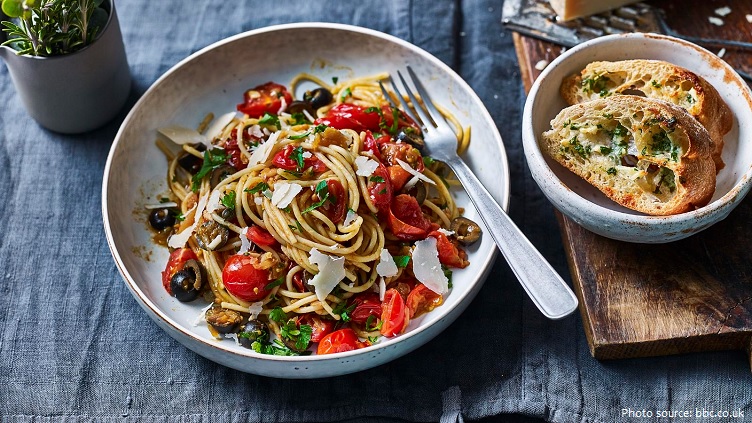
Carbonara is a delicious sauce usually for spaghetti. It consists of fresh egg yolks, bacon or pancetta), grated cheese and black pepper. The name of the sauce is derived from the word “carbonaro,” or “charcoal burner,” which may refer to the type of stoves the dish was first cooked on, the workers
who first ate it or even the Carbonari, a revolutionary secret society that played a key role in early attempts aimed at securing Italian unification. Another creamy concoction made its debut in 1914 when
restaurateur Alfred Di Lelio created a mixture of rich butter, grated Parmesan and black pepper to restore his wife’s strength after she gave birth to their son—also giving birth to the popular alfredo sauce.
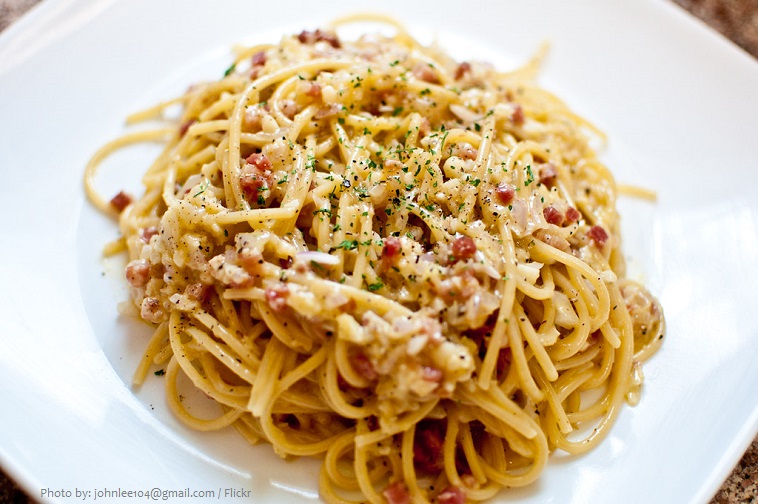
Spaghetti bolognese is a pasta dish that is popular outside Italy, but not part of traditional Bolognese or even Italian cuisine. The dish is generally perceived as inauthentic when encountered by Italians abroad. It consists of spaghetti served with a sauce made from tomatoes, minced beef, garlic,
wine and herbs – sometimes minced beef can be replaced by other minced meats.

Spaghetti and meatballs is an Italian-American dish consisting of spaghetti, tomato sauce and meatballs. It was an innovation of Italian immigrants in New York City, who had access to a more plentiful meat supply than in Italy. Italian writers and chefs often mock the dish as pseudo-Italian or non-Italian, because in Italy meatballs are smaller and are only served with egg-based, baked pasta. However, various kinds of pasta with meat are part of the culinary tradition of the Abruzzo, Apulia, Sicily, and other parts of southern Italy.
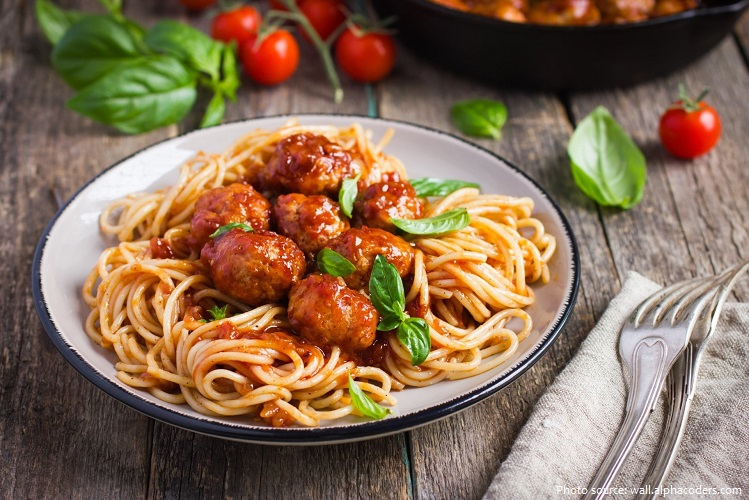
By 1955, annual consumption of spaghetti in Italy doubled from 14 kilograms (30.9 lb) per person before World War II to 28 kilograms (61.7 lb). By that year, Italy produced 1,432,990 tons of spaghetti, of which 74,000 were exported, and had a production capacity of 3 million tons.
Spaghettoni is a thicker form of spaghetti, while capellini is a very thin spaghetti.
In cooking, al dente describes pasta or rice that is cooked to be firm to the bite. The etymology is Italian “to the tooth”. In contemporary Italian cooking, the term identifies the ideal consistency for pasta and involves a brief cooking time.
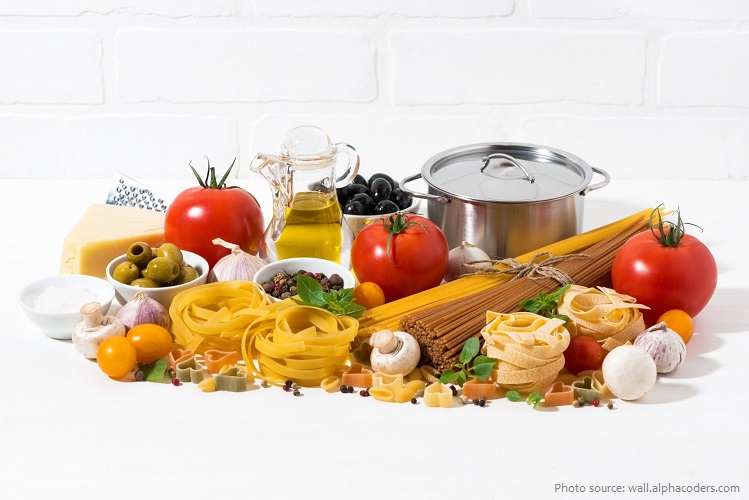
The spaghetti-tree hoax was a three-minute hoax report broadcast on April Fools’ Day 1957 by the BBC current-affairs programme Panorama, purportedly showing a family in southern Switzerland harvesting
spaghetti from the family “spaghetti tree”. At the time spaghetti was relatively unknown in the UK, so many British were unaware that it is made from wheat flour and water – a number of viewers
afterwards contacted the BBC for advice on growing their own spaghetti trees. Decades later, CNN called this broadcast “the biggest hoax that any reputable news establishment ever pulled”.
The world record for the largest bowl of spaghetti was set in March 2009 and reset in March 2010 when a Buca di Beppo restaurant in Garden Grove, California, filled a swimming pool with more than 6,251 kg (13,780 pounds) of spaghetti.
Spaghetti Westerns have little to do with spaghetti other than using the name as a shorthand for Italian.